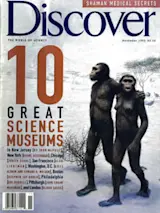The day before John F. Kennedy’s election, two teenagers played hooky to watch Mercury pass in front of the sun. These were the junior high’s science nuts. Mike already had a fantastic ham radio setup. The other had memorized celestial data as if they were baseball cards: that was me.
Through my small telescope we saw a black dot that looked like a runaway sunspot, moving a hundred times faster than the sun’s rotation. This was Mercury, its nightside facing us. We used a solar filter to keep our eyes from turning to carbon. It was the kind you screwed into the eyepiece to reduce the light at the last moment, just in front of your eyeball. Its dark glass got fiercely hot. Nobody uses those dangerous little filters anymore. Now a large disk sits in front of the tube, blocking the sunlight before it becomes intensified by the telescope. ...














